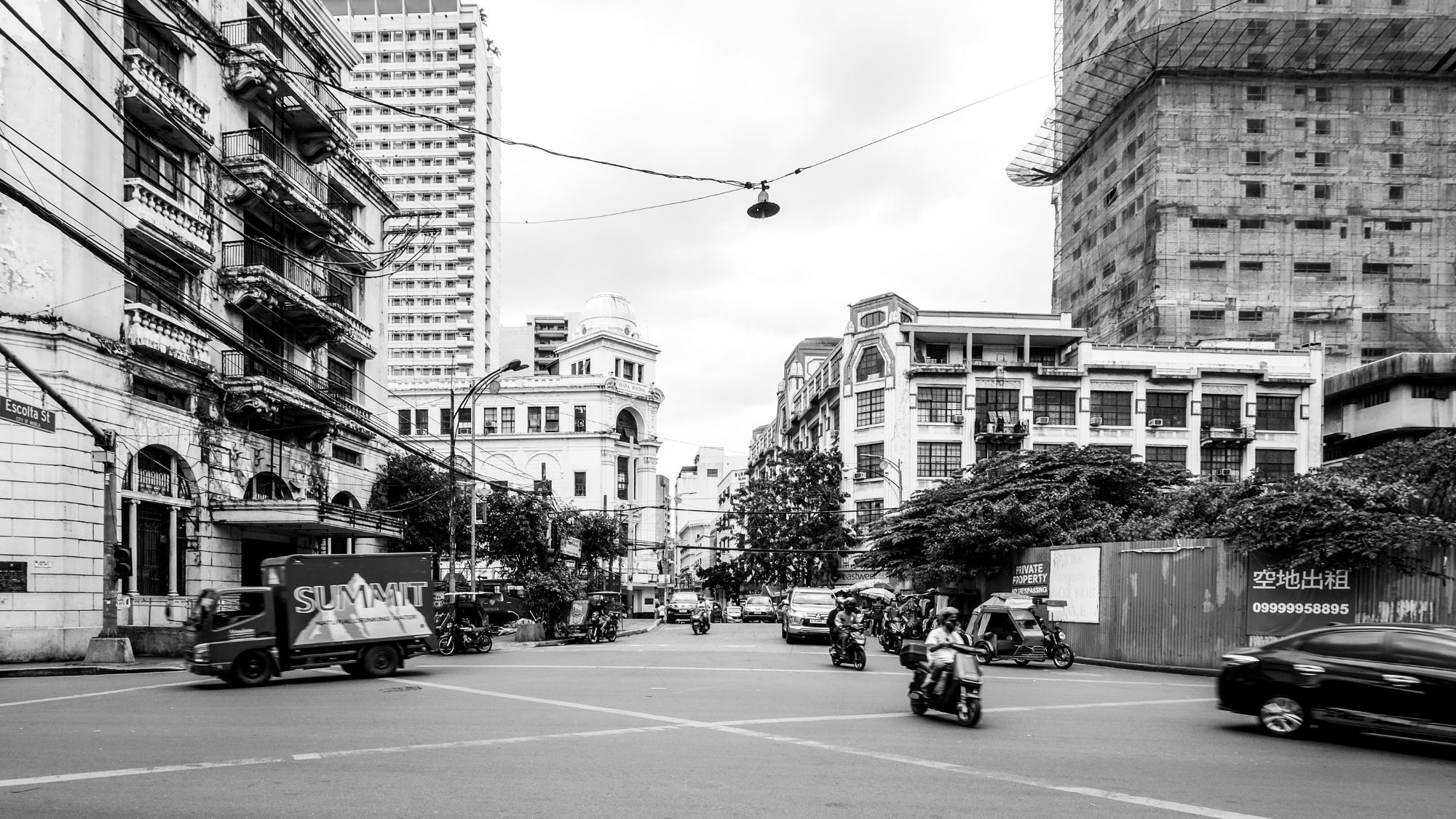
Top Things to See in Binondo Chinatown
Since its inception in 1594, Binondo, Chinatown remains a central part of Manila. Modern high-rises nestle closely with heritage buildings, giving the district a palpable sense of history. Widely recognized as the world’s oldest Chinatown, the Spaniards established Binondo as a settlement for Catholic Chinese. From Jones Bridge to Binondo Church, we explore the role it plays in our country’s cultural growth.
Located across the Pasig River from Intramuros, the walled city and seat of Spanish colonial power, Binondo served as a vital commercial hub, facilitating trade between the Chinese settlers and the Spanish colonists. This strategic move was aimed at converting the Chinese immigrant population to Christianity while also keeping them close for trade purposes.
A Melting Pot of Filipino, Chinese, and Spanish Culture
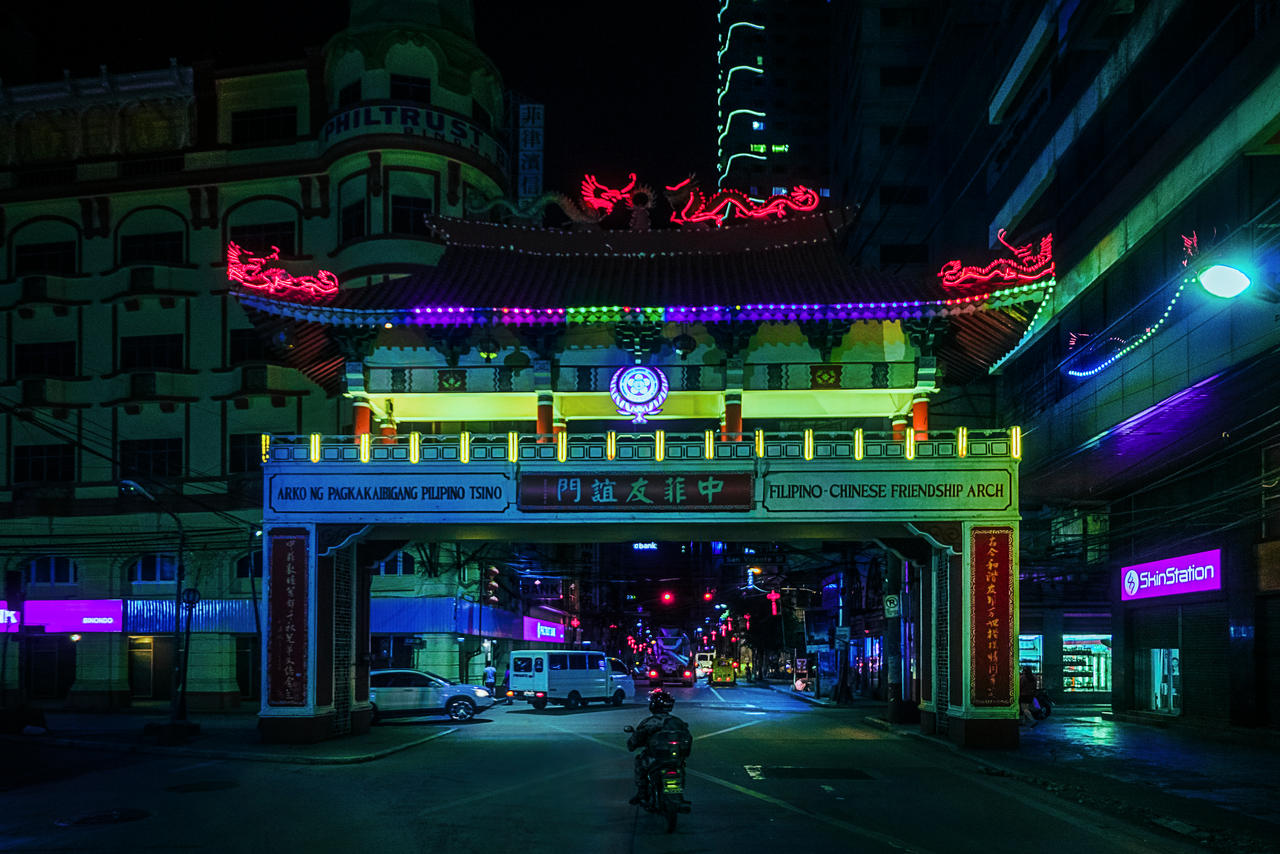
Over the centuries, Binondo evolved into a melting pot of Filipino and Chinese cultures. This shaped the community’s unique identity, and the district thrived as a center of commerce, finance, and trade. Its residents play a significant role in the economic development of Manila and the Philippines at large. Streets like Ongpin became synonymous with gold traders, while others specialized in goods ranging from traditional Chinese medicines to exotic food items. It’s since become a popular destination for adventurous foodies.
The area’s architecture reflects its rich history, featuring a mix of Spanish colonial buildings and Chinese shops. Religious structures like the Binondo Church symbolize the district’s Catholic heritage intertwined with Chinese influences.
Despite the challenges of modernization and urban development, Binondo has retained its vibrant character. It remains a bustling enclave where traditional practices coexist with contemporary lifestyles. Efforts to preserve its cultural and historical significance have gained momentum, recognizing Binondo’s role not just as a commercial center but as a living museum of Filipino-Chinese heritage. Today, it continues to attract visitors for its historical landmarks, culinary offerings, and the annual Chinese New Year celebration.
For architecture enthusiasts and cultural travelers, this area offers an array of sites that showcase its unique mix of colonial, Chinese, and modern Filipino architectural styles.
It’s fascinating to observe how Chinatown preserved its traditional essence while adapting to contemporary life. Old favorites like Salazar’s Bakery continue to thrive beside a sleek Apple Store. Traditional jewelers operate side by side with spiritual temples, further highlighting Chinatown’s unique ability to maintain its cultural heritage while embracing progress.
In celebration of the Chinese New Year, we explore Manila’s historic district that continues to play a key role in the country’s economic and cultural growth. Here are the top 8 architectural sites to see in Binondo, Chinatown.
1. Jones Bridge
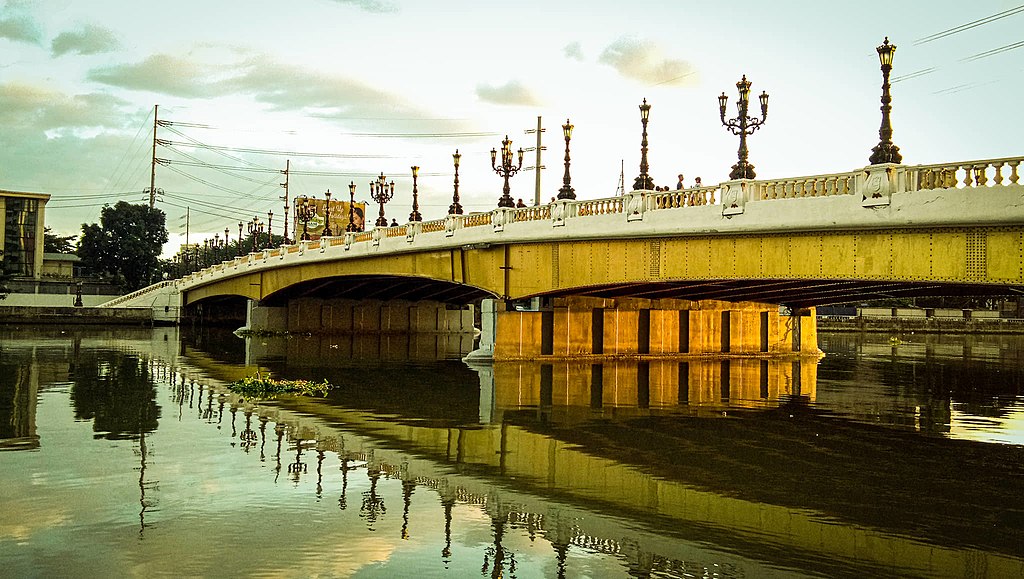
Originally named after William Atkinson Jones, the American legislator responsible for the Philippine Autonomy Act of 1916, Jones Bridge links Binondo with Central Manila. Designed in the neoclassical style by Juan Arellano, the same architect behind the Manila Central Post Office, it features ornate lamp posts, statues, and balustrades meant to evoke the charm and sophistication of European bridges.
The bridge had four statues called La Madre Filipina, representing Progress, Gratitude, Democracy, and Justice. During the bridge’s extensive renovation in recent years, efforts were made to restore these statues to their former glory. However, not all of the original statues remain on the bridge today. Two of the statues, representing Progress and Justice, now stand within the premises of the Court of Appeals in Manila.
The other two sculptures were restored to their original positions. The first of these statues is a replica, created to replace the original lost during World War II. The second statue was brought back from Rizal Park and reinstated on the bridge.
Today, Jones Bridge is both a functional piece of infrastructure and a popular photographic spot. It’s a poignant reminder of Manila’s resilience and heritage.
2. Ongpin Street

More than just a busy thoroughfare, walking through Ongpin Street is like traversing a living museum. Numerous historic shop houses combine residential and commercial spaces. These structures feature elements of Spanish colonial architecture, such as capiz shell windows, and Chinese influences, evident in their ornate facades and Feng Shui-inspired layouts. Their intricate exteriors, wooden shutters, and balconies speak of Binondo’s rich history and multicultural heritage.
The grand arch marks the entrance to Chinatown. It incorporates elements typical of traditional Chinese gates, welcoming visitors into the bustling streets of Binondo. Another popular fixture is the Eng Bee Tin Chinese Deli, known for its traditional Chinese pastries. While the flagship store is a modern building, it still pays homage to its Chinese heritage through architectural details and color schemes, blending with the street’s historical context.
Just off Ongpin Street is the Carvajal Street Alley, a hotspot for local foodies. The architecture here is less about grand buildings and more about the intimate scale and utilitarian design. The market stalls and shops offer insights into the daily lives of the local community.
3. Seng Guan Temple
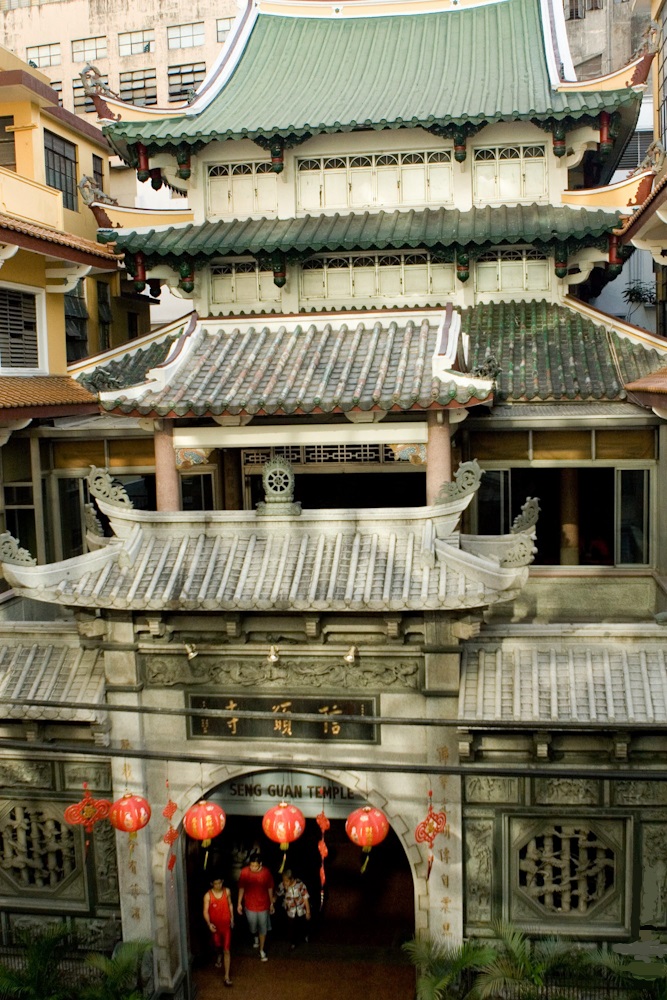
As a symbol of the strong Buddhist faith within Binondo’s Filipino Chinese community, the Seng Guan Temple is notable for its traditional Chinese architectural designs, including ornate carvings, red pillars, and intricate dragon motifs. This temple is a peaceful sanctuary amidst the bustling district, offering a glimpse into the spiritual life of Binondo’s residents.
4. Binondo Church

Officially known as the Minor Basilica of San Lorenzo Ruiz, Binondo Church is a monument to the enduring Catholic faith among the Chinese Filipino community. Originally founded by Dominican priests in 1596 to serve Chinese converts, the church underwent several reconstructions due to wars and natural disasters.
Its current façade and octagonal bell tower are remnants of the 19th century, blending Romanesque and Renaissance elements that make it a must-see. The church also celebrates masses in Filipino, English, and two Chinese dialects.
5. Plaza San Lorenzo Ruiz, Binondo
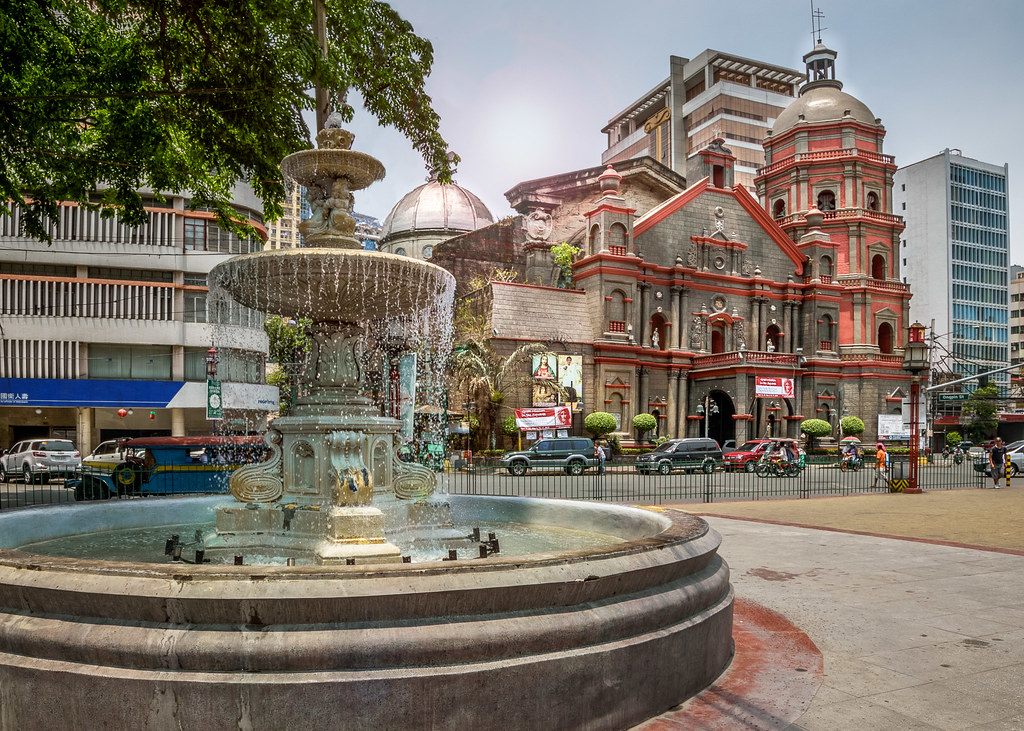
Named after the first Filipino saint, this plaza is surrounded by several historical buildings, including Binondo Church. It serves as a communal space that highlights the fusion of Filipino and Chinese cultures, with its open space offering a respite from the crowded streets and an excellent vantage point for appreciating the surrounding architecture.
Efforts to preserve and revitalize the plaza highlight its importance as a heritage site to bridge the past and present. Today, it remains a focal point for celebrations, cultural events, and daily interactions.
6. Escolta Street

Once the premier commercial and business district during the American colonial era, Escolta boasts several historic buildings that have been preserved or repurposed. Architectural enthusiasts will appreciate the diverse styles ranging from Beaux-Arts to Neoclassical and Art Deco, reflecting the economic prosperity of Binondo in the early 20th century.
It is one of the country’s oldest streets and once the go-to place for luxury shopping, entertainment, and business from the late 19th to mid-20th centuries. The historic buildings housed the Philippines’ first department stores, cinemas, and business establishments catering to Manila’s elite.
However, Escolta Street’s prominence waned over the years. But recent revitalization efforts by the local government and various heritage conservation groups aim to breathe new life into this historic street. These initiatives include hosting arts and cultural events, and encouraging creative enterprises to set up shop in the area.
Today, Escolta is experiencing a renaissance as a center for arts, culture, and heritage tourism. It attracts a new generation interested in its rich history and architectural legacy, making it a symbol of Binondo’s past glory and its potential for future regeneration.
7. The First United Building
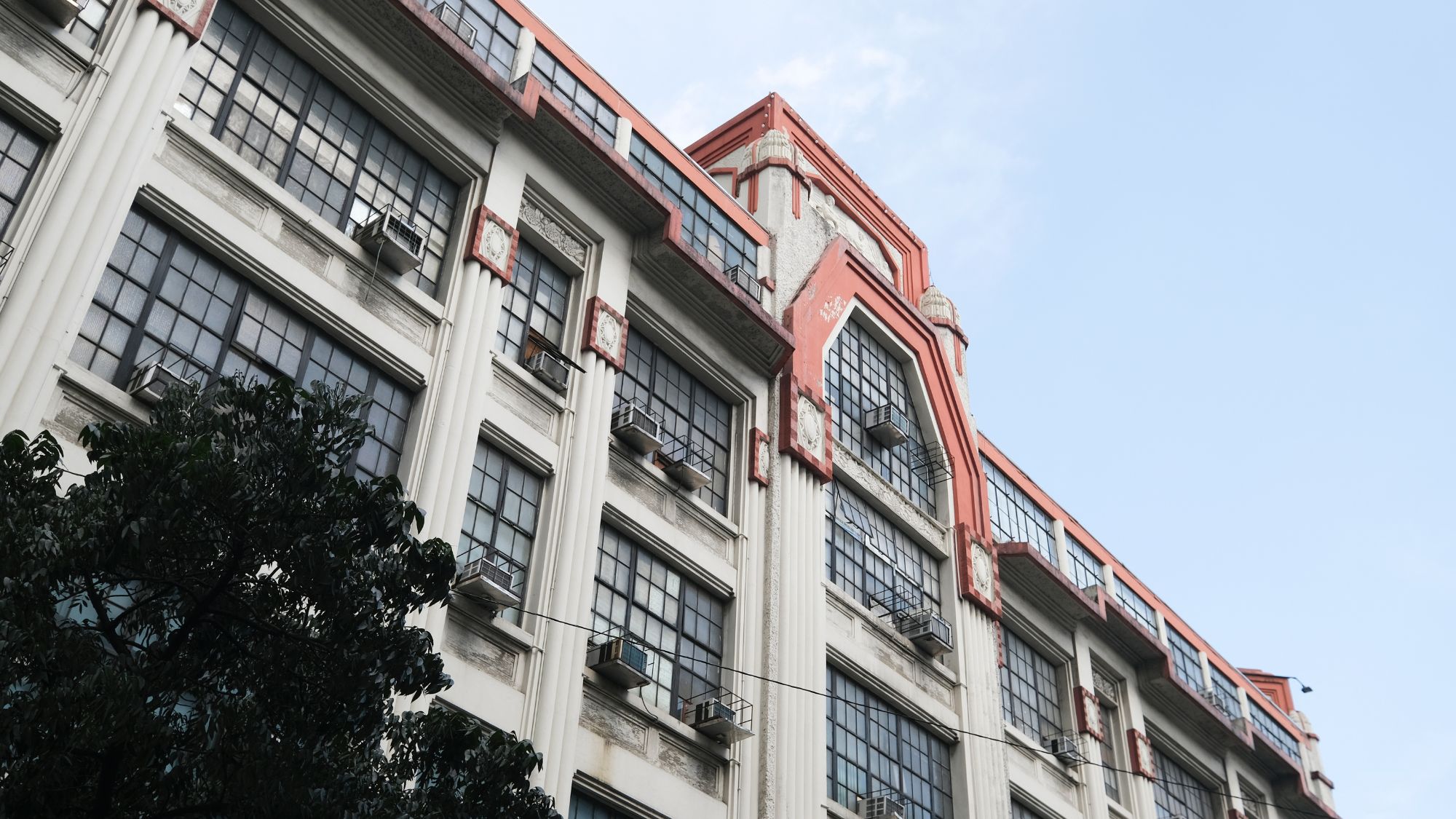
Formerly known as the Perez-Samanillo Building, the First United is a prime example of Art Deco architecture in the Philippines. The building’s architectural details, such as its façade and interior elements, reflect the Art Deco movement’s influence. Characterized by geometric patterns, bold lines, and a sense of elegance and modernity, they offer a glimpse into the opulent past of Binondo and Escolta.
Completed in 1928, the building was designed by Andres Luna de San Pedro, son of renowned Filipino painter Juan Luna. Despite the decline in Escolta’s prominence, the building remains a beloved landmark. In recent years, it has been revitalized as a cultural and arts venue. This effort is part of a broader initiative to preserve and celebrate the rich heritage of Escolta Street.
8. The Regina Building

The Regina Building is another historic gem along Escolta. Like the First United Building, the Regina Building is noted for its architectural beauty, showcasing early 20th-century Neoclassical design. Built in the 1930s, it served as a commercial building for various businesses and offices throughout its history.
Ornate details and sculptures adorn the Regina Building’s façade. The design emphasizes symmetry, grandeur, and the use of classical elements. Having weathered changes in Manila’s urban landscape, it stands as a reminder of Escolta’s storied past. Efforts to preserve and rehabilitate the Regina Building are part of the ongoing movement to revive the area’s cultural and historical significance.
The First United Building and the Regina Building are crucial components of the heritage conservation efforts in Escolta. Both represent the cultural and economic history of Binondo. They also reflect the architectural trends of their time. These are focal points for revitalization and cultural activities aimed at bringing new life to this historic district.
Binondo for the Ages
After more than 400 years, Binondo, Chinatown is understandably showing its age. However, this historic district continues to thrive as one of Manila’s most vibrant communities. Despite the challenges of modernization and the wear of time, Binondo manages to retain its unique cultural identity, blending Filipino and Chinese traditions in a unique and dynamic urban tapestry. The narrow streets, century-old buildings, and bustling markets still pulse with the energy of commerce, tradition, and daily life, much like they have for centuries.
Efforts to preserve its rich heritage are evident, with revitalization projects aiming to breathe new life into its historic structures while respecting their cultural significance. As you cross over from Jones Bridge, Binondo, Chinatown’s enduring charm lies in its ability to harmonize the old with the new, ensuring its legacy continues to be celebrated by future generations.
Related reading: China Bank Binondo: Restoring A Heritage Building to Prepare for The Next 100 Years


